

ISSN 1004-5759 CN 62-1105/S


草业学报 ›› 2022, Vol. 31 ›› Issue (2): 52-61.DOI: 10.11686/cyxb2021207
收稿日期:2021-05-10
修回日期:2021-07-07
出版日期:2022-02-20
发布日期:2021-12-22
通讯作者:
胡永红
作者简介:Corresponding author. E-mail: huyonghong@csnbgsh.cn基金资助:
Qiang XING1,2( ), Jun QIN1, Yong-hong HU1(
), Jun QIN1, Yong-hong HU1( )
)
Received:2021-05-10
Revised:2021-07-07
Online:2022-02-20
Published:2021-12-22
Contact:
Yong-hong HU
摘要:
开放的公园绿地草坪可满足居民游憩健身、防灾避险需求,保障城市居民的公共安全和健康,但过度践踏会对草坪产生直接的机械磨损和土壤紧实造成的间接损伤,因此草坪的耐践踏性成为衡量公园绿地质量的关键因素之一。为了探究不同草坪草在不同践踏强度下耐践踏能力,以上海常用的结缕草属、雀稗属、狗牙根属(Cynodon)3个暖季型草坪草品种为试验材料,设置不同客流量大小的践踏强度和践踏频率,在草坪生长高峰的5-9月分散式模拟践踏后,从草坪草的耐磨损性、耐土壤紧实性及恢复能力3个方面进行多指标隶属函数综合评价。结果表明:在轻度践踏水平时,3个草种的耐践踏性为:‘Belair’结缕草>‘SeaIsle2000’海滨雀稗>‘Tifdwarf’杂交狗牙根,40人·次-1的轻度践踏可促进3个草种生长;在中度践踏时3个草种的耐践踏性为:杂交狗牙根>海滨雀稗>结缕草,杂交狗牙根在5-9月生长期内受80人·次-1的践踏时表现出最强的耐践踏能力;重度践踏下,3个草种的耐践踏综值为:杂交狗牙根>海滨雀稗>结缕草,杂交狗牙根的耐践踏能力与其本身较强的生长量、恢复能力相关。上述试验结果,不仅可为公园绿地规划建设中所需耐践踏草坪草资源的推广利用提供理论依据,也可为公园绿地承载、绿地养护及客流导引间形成动态反馈机制的智能化管理系统提供基础数据,保障游客的安全和舒适度。
邢强, 秦俊, 胡永红. 不同践踏强度对3种暖季型草坪草的影响[J]. 草业学报, 2022, 31(2): 52-61.
Qiang XING, Jun QIN, Yong-hong HU. Effects of different trampling intensities on three species of warm season turfgrass[J]. Acta Prataculturae Sinica, 2022, 31(2): 52-61.

图1 不同践踏强度对草坪草地上坪用指标的影响A:结缕草Z. japonica ‘Belair’;B:海滨雀稗P. vaginatum ‘SeaIsle2000’;C:杂交狗牙根 C. dactylon×C. transvadlensis ‘Tifdwarf’.不同字母表示差异显著(P<0.05)。Different letters indicate significant difference at P<0.05.下同The same below.
Fig. 1 Effects of different trampling intensity on phenotypic traits of turfgrass
品种 Variety | 重度践踏 Strengthen trampling | 中度践踏 Medium trampling | 轻度践踏 Light trampling | CK |
|---|---|---|---|---|
结缕草 Z. japonica ‘Belair’ | 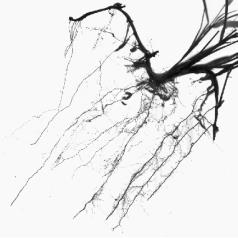 | 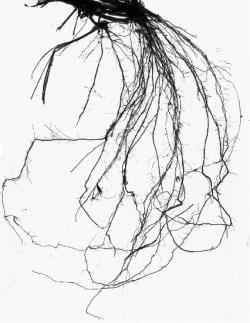 | 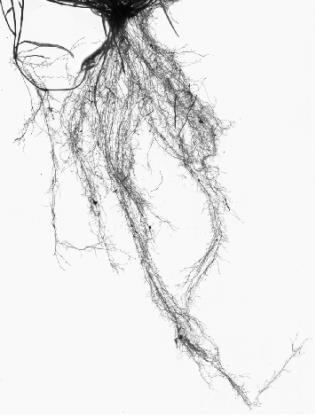 | 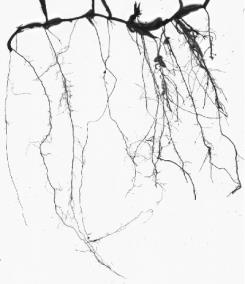 |
海滨雀稗 P. vaginatum‘SeaIsle2000’ |  | 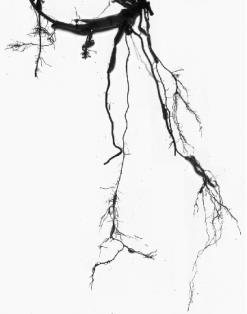 | 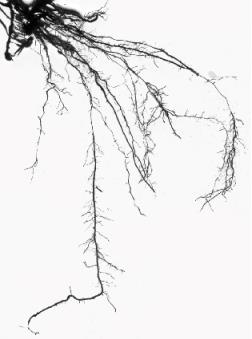 |  |
杂交狗牙根 C. dactylon×C.transvadlensis ‘Tifdwarf’ |  |  | 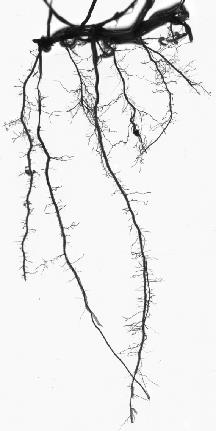 | 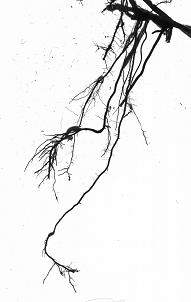 |
表1 不同践踏强度对单株草坪草地下根系的影响
Table 1 Effects of different trampling intensity on root of single turfgrass
品种 Variety | 重度践踏 Strengthen trampling | 中度践踏 Medium trampling | 轻度践踏 Light trampling | CK |
|---|---|---|---|---|
结缕草 Z. japonica ‘Belair’ |  |  |  |  |
海滨雀稗 P. vaginatum‘SeaIsle2000’ |  |  |  |  |
杂交狗牙根 C. dactylon×C.transvadlensis ‘Tifdwarf’ |  |  |  |  |
践踏处理 Traffic treatments | 轻度Light | 中度Medium | 重度Strengthen | ||||||
|---|---|---|---|---|---|---|---|---|---|
| 结缕草 ‘Belair’ | 海滨雀稗‘SeaIsle2000’ | 杂交狗牙根 ‘Tifdwarf’ | 结缕草 ‘Belair’ | 海滨雀稗‘SeaIsle2000’ | 杂交狗牙根 ‘Tifdwarf’ | 结缕草 ‘Belair’ | 海滨雀稗‘SeaIsle2000’ | 杂交狗牙根 ‘Tifdwarf’ | |
| 颜色Colour | 0.586 | 1.000 | 0.000 | 0.000 | 0.744 | 1.000 | 0.000 | 0.661 | 0.277 |
| 密度 Density | 1.000 | 0.291 | 0.000 | 0.992 | 0.000 | 1.000 | 0.000 | 0.613 | 1.000 |
| 植被指数NDVI | 0.000 | 0.436 | 1.000 | 0.000 | 1.000 | 1.000 | 0.000 | 1.000 | 0.277 |
| 草层高度Turf height | 0.780 | 0.000 | 1.000 | 1.000 | 0.000 | 0.082 | 1.000 | 0.000 | 0.438 |
| 根总长Total root length | 0.459 | 1.000 | 0.000 | 0.000 | 1.000 | 0.471 | 0.061 | 0.000 | 1.000 |
| 根平均直径Average root diametter | 1.000 | 0.000 | 0.634 | 0.000 | 0.313 | 1.000 | 0.000 | 1.000 | 0.759 |
| 根表面积Root surface area | 0.752 | 1.000 | 0.000 | 0.000 | 0.683 | 1.000 | 0.000 | 0.904 | 1.000 |
| 根系体积Root volume | 1.000 | 0.886 | 0.000 | 0.000 | 0.486 | 1.000 | 0.000 | 1.000 | 0.854 |
| 再生速度Regrowth rate | 1.000 | 0.122 | 0.000 | 1.000 | 0.424 | 0.000 | 1.000 | 0.295 | 0.000 |
| 草屑总量Grass elippings | 1.000 | 0.000 | 0.096 | 0.997 | 1.000 | 0.000 | 1.000 | 0.000 | 0.113 |
| 根冠比Root to shoot ratio | 1.000 | 0.170 | 0.000 | 1.000 | 0.000 | 0.149 | 1.000 | 0.203 | 0.000 |
| 综值Integrated value | 0.780 | 0.446 | 0.248 | 0.454 | 0.514 | 0.609 | 0.369 | 0.516 | 0.520 |
表2 不同践踏强度下3种草坪草耐践踏性综合评价
Table 2 Comprehensive assessment of the wear tolerance of turfgrass under the different traffic stresses
践踏处理 Traffic treatments | 轻度Light | 中度Medium | 重度Strengthen | ||||||
|---|---|---|---|---|---|---|---|---|---|
| 结缕草 ‘Belair’ | 海滨雀稗‘SeaIsle2000’ | 杂交狗牙根 ‘Tifdwarf’ | 结缕草 ‘Belair’ | 海滨雀稗‘SeaIsle2000’ | 杂交狗牙根 ‘Tifdwarf’ | 结缕草 ‘Belair’ | 海滨雀稗‘SeaIsle2000’ | 杂交狗牙根 ‘Tifdwarf’ | |
| 颜色Colour | 0.586 | 1.000 | 0.000 | 0.000 | 0.744 | 1.000 | 0.000 | 0.661 | 0.277 |
| 密度 Density | 1.000 | 0.291 | 0.000 | 0.992 | 0.000 | 1.000 | 0.000 | 0.613 | 1.000 |
| 植被指数NDVI | 0.000 | 0.436 | 1.000 | 0.000 | 1.000 | 1.000 | 0.000 | 1.000 | 0.277 |
| 草层高度Turf height | 0.780 | 0.000 | 1.000 | 1.000 | 0.000 | 0.082 | 1.000 | 0.000 | 0.438 |
| 根总长Total root length | 0.459 | 1.000 | 0.000 | 0.000 | 1.000 | 0.471 | 0.061 | 0.000 | 1.000 |
| 根平均直径Average root diametter | 1.000 | 0.000 | 0.634 | 0.000 | 0.313 | 1.000 | 0.000 | 1.000 | 0.759 |
| 根表面积Root surface area | 0.752 | 1.000 | 0.000 | 0.000 | 0.683 | 1.000 | 0.000 | 0.904 | 1.000 |
| 根系体积Root volume | 1.000 | 0.886 | 0.000 | 0.000 | 0.486 | 1.000 | 0.000 | 1.000 | 0.854 |
| 再生速度Regrowth rate | 1.000 | 0.122 | 0.000 | 1.000 | 0.424 | 0.000 | 1.000 | 0.295 | 0.000 |
| 草屑总量Grass elippings | 1.000 | 0.000 | 0.096 | 0.997 | 1.000 | 0.000 | 1.000 | 0.000 | 0.113 |
| 根冠比Root to shoot ratio | 1.000 | 0.170 | 0.000 | 1.000 | 0.000 | 0.149 | 1.000 | 0.203 | 0.000 |
| 综值Integrated value | 0.780 | 0.446 | 0.248 | 0.454 | 0.514 | 0.609 | 0.369 | 0.516 | 0.520 |
| 1 | Zhou B X, Sun J X. The principle and manufacture of turf trampler. Journal of Gansu Agricultural University, 1994, 29(1): 93-95. |
| 周保鑫, 孙吉雄. 草坪践踏器的原理及其研制. 甘肃农业大学学报, 1994, 29(1): 93-95. | |
| 2 | Huang X L, Yang Z M. Research progress on traffic tolerance of sport turf with different turfgrass species and turf beds. Pratacultural Science, 2009, 26(6): 180-186. |
| 黄晓露, 杨志民. 不同草种和床基的运动型草坪耐践踏性研究进展. 草业科学, 2009, 26(6): 180-186. | |
| 3 | Cattani D J, Clark K W. Influence of wear-stress on turf-grass growth components and visual density ratings. Canadian Journal of Plant Science, 1991, 71(1): 305-308. |
| 4 | Zhou L S, Dai Q G, Zhang H C, et al. Effects of different trampling intensities on bermudagrass and manilagrass. Pratacultural Science, 2005, 22(12): 77-81. |
| 周兰胜, 戴其根, 张洪程, 等. 不同践踏强度对狗牙根和马尼拉形态生理的影响. 草业科学, 2005, 22(12): 77-81. | |
| 5 | Yang X Y, Li D D, Liu J X, et al. Evaluation of trampling resistance of two superior varieties of warm-season turfgrass. Pratacultural Science, 2018, 35(1): 54-62. |
| 杨向阳, 李丹丹, 刘建秀, 等. 两种暖季型草坪草优良品种耐践踏性评价. 草业科学, 2018, 35(1): 54-62. | |
| 6 | Liu T Z, Wang X S, Zhang J M. Development of a novel traffic simulator and evaluation of warm-season turfgrass traffic tolerance in field experiments. Acta Prataculturae Sinica, 2019, 28(12): 41-52. |
| 刘天增, 王旭盛, 张巨明. 新型草坪模拟践踏器的研制及暖季型草坪草耐践踏性评价. 草业学报, 2019, 28(12): 41-52. | |
| 7 | Buttery B R, Tan C S, Drury C F, et al. The effects of soil compaction, soil moisture and soil type on growth and nodulation of soybean and common bean. Canadian Journal of Plant Science, 1998, 78(4): 571-576. |
| 8 | Masle J, Passioura J B. The effect of soil strength on the growth of young wheat plants. Functional Plant Biology, 1987, 14(6): 643-656. |
| 9 | Atwell B J. The effect of soil compaction on wheat during early tillering. I. Growth, development and root structure. New Phytologist, 1990, 115(1): 29-35. |
| 10 | Goodman A M, Ennos A R. The effects of soil bulk density on the morphology and anchorage mechanics of the systems of sunflower and maize. Annals of Botany, 1999, 83(3): 293-302. |
| 11 | Oussible M, Crookston R K, Larson W E. Subsurface compaction reduces the root and shoot growth and grain yield of wheat. Agronomy Journal, 1992, 84(1): 34-38. |
| 12 | Yin S X. Treat the trampling problem of the lawn correctly. China Flowers & Horticulture, 2001(13): 28. |
| 尹淑霞. 正确对待草坪的践踏问题. 中国花卉园艺, 2001(13): 28. | |
| 13 | Chen L, Liu Z H, Zhao H Y, et al. Study on trample intensity and restoration system of turf sport field. Grassland and Turf, 2002(4): 28-30. |
| 陈莉, 刘照辉, 赵红洋, 等. 运动场草坪践踏强度及其恢复系的研究. 草原与草坪, 2002(4): 28-30. | |
| 14 | Zhan M C, Xiang Z X. Effect of ‘Monument’ herbicide on over seeded turf grass. Pratacultural Science, 2018, 35(6): 1393-1399. |
| 湛迈城, 向佐湘. 除草剂‘抹绿’对春季交播草坪草的影响. 草业科学, 2018, 35(6): 1393-1399. | |
| 15 | Meng X. Effect of different sand/soil ratio on the recovery ability of hybrid burmuda grass after trampling. Nanjing: Nanjing Agricultural University, 2011. |
| 孟鑫. 不同沙土配比对践踏后杂交狗牙根草坪恢复能力的影响. 南京: 南京农业大学, 2011. | |
| 16 | Zhou L S, Dai Q G, Zhang H C, et al. Effect of different trampling intensities on manila grass. Journal of Yangzhou University (Agricultural and Life Science Edition), 2006, 27(1): 85-90. |
| 周兰胜, 戴其根, 张洪程, 等. 践踏胁迫对马尼拉草坪的影响. 扬州大学学报(农业与生命科学院), 2006, 27(1): 85-90. | |
| 17 | An Y, Chen L J, Meng H L, et al. Effect traffic stresses on phenotypic traits of Zoysia matrella. Acta Agrestia Sinica, 2005, 13(4): 299-303. |
| 安渊, 陈丽君, 孟慧琳, 等. 不同践踏强度对沟叶结缕草坪用性状的影响. 草地学报, 2005, 13(4): 299-303. | |
| 18 | Ren Y K, Gan Y M, Li Z D, et al. Research progress of morphological, physiological and anatomincal characteristics associated with turfgrass wear tolerance. Journal of Sichuan Grassland and Forage Science, 2003(4): 14-16. |
| 任永宽, 干友民, 李志丹, 等. 草坪草耐践踏性的形态学、生理学及解剖学研究进展. 四川草原, 2003(4): 14-16. | |
| 19 | Wang Y, Zhang M, Zhang X Y, et al. Comparative studies on elasticity and scrape tolerance characters of Zoysia japonica and Poa pratensis. Pratacultural Science, 2002, 19(2): 56-59. |
| 王艳, 张绵, 张学勇, 等. 结缕草与草地早熟禾的弹性与耐磨性对比研究. 草业科学, 2002, 19(2): 56-59. | |
| 20 | Song G L. Studies on the effect of traffic stress on the physiology and growth of turfgrass in soccer pitches. Beijing: Beijing Forestry University, 2003. |
| 宋桂龙. 践踏对足球场草坪草生长和生理影响的研究. 北京: 北京林业大学, 2003. | |
| 21 | Roberts E C. Proceedings of the second international turfgrass research conference. Madison: American Society of Agronomy, 1974. |
| 22 | Sills M J, Carrow R N. Turfgrass growth N use, and water use under soil compaction and N fertilization. Agronomy Journal, 1983, 73(3): 488-492. |
| 23 | Canaway P M. A comparison of real and aritificial wear. Journal of the Sports Turf Research Institute, 1981, 57: 108-121. |
| 24 | Wu D M, Hu L, Zheng M Z, et al. Effect of different biogas fertilizer on turf quality and growth. Acta Agrestia Sinica, 2011, 19(3): 473-477. |
| 吴道明, 胡林, 郑苗壮, 等. 不同用量沼肥对高羊茅草坪质量及生长的影响. 草地学报, 2011, 19(3): 473-477. | |
| 25 | Qi F, Zheng Y F, Song G L. Effects of traffic stress on growth of tall fescue and Kentucky bluegrass. Pratacultural Science, 2013, 30(7): 1007-1013. |
| 奇凤, 郑扬帆, 宋桂龙. 践踏对坪用高羊茅和草地早熟禾生长的影响. 草业科学, 2013, 30(7): 1007-1013. | |
| 26 | Li J J, Chen L. Survey of utilization strength of Yangseng sport turf in Xi’an.Grassland and Turf, 2003(2): 40-41, 46. |
| 李建江, 陈莉. 使用强度对足球场草坪影响的研究. 草原与草坪, 2003(2): 40-41, 46. |
| [1] | 高鹏飞, 张静, 范卫芳, 高冰, 郝宏娟, 吴建慧. 干旱胁迫对光叉委陵菜根系特征、结构和生理特性的影响[J]. 草业学报, 2022, 31(2): 203-212. |
| [2] | 白婕, 臧真凤, 刘丛, 昝看卓, 龙明秀, 王可珍, 屈洋, 何树斌. 紫花苜蓿叶片和根系膜脂过氧化及C、N特征对水分和N添加的响应[J]. 草业学报, 2022, 31(2): 213-220. |
| [3] | 唐立涛, 毛睿, 王长庭, 李洁, 胡雷, 字洪标. 氮磷添加对高寒草甸植物群落根系特征的影响[J]. 草业学报, 2021, 30(9): 105-116. |
| [4] | 章武, 杨锦玉, 卢翔, 林金梅, 牛学礼. 木霉菌对草坪草病原菌的抑菌效果及其机理初步研究[J]. 草业学报, 2021, 30(9): 137-149. |
| [5] | 谭真真, 张夏香, 杨志民. 冷季型草坪草耐热性研究进展[J]. 草业学报, 2021, 30(9): 193-202. |
| [6] | 汪雪, 刘晓静, 赵雅姣, 王静. 根系分隔方式下紫花苜蓿/燕麦间作氮素利用及种间互馈特征研究[J]. 草业学报, 2021, 30(8): 73-85. |
| [7] | 臧真凤, 白婕, 刘丛, 昝看卓, 龙明秀, 何树斌. 紫花苜蓿形态和生理指标响应干旱胁迫的品种特异性[J]. 草业学报, 2021, 30(6): 73-81. |
| [8] | 李洁, 潘攀, 王长庭, 胡雷, 陈科宇, 杨文高. 三江源区不同建植年限人工草地根系动态特征[J]. 草业学报, 2021, 30(3): 28-40. |
| [9] | 刘斯莉, 王长庭, 张昌兵, 胡雷, 唐立涛, 潘攀. 川西北高原3种禾本科牧草根系特征比较研究[J]. 草业学报, 2021, 30(3): 41-53. |
| [10] | 杨林, 陈默, 李海燕, 杨允菲. 模拟降雨格局变化对虎尾草分株和根系特征的影响[J]. 草业学报, 2021, 30(1): 181-188. |
| [11] | 李振松, 万里强, 李硕, 李向林. 苜蓿根系构型及生理特性对干旱复水的响应[J]. 草业学报, 2021, 30(1): 189-196. |
| [12] | 黄海霞, 杨琦琦, 崔鹏, 陆刚, 韩国君. 裸果木幼苗根系形态和生理特征对水分胁迫的响应[J]. 草业学报, 2021, 30(1): 197-207. |
| [13] | 张桐瑞, 李富翠, 李辉, 季双旋, 范志浩, 陈雨峰, 晁跃辉, 韩烈保. 草垫植入对混合草坪坪床稳定性和表观质量的影响[J]. 草业学报, 2020, 29(8): 27-36. |
| [14] | 孙小富, 黄莉娟, 王普昶, 赵丽丽, 刘芳. 不同供磷水平对宽叶雀稗形态及生理的影响[J]. 草业学报, 2020, 29(8): 58-69. |
| [15] | 陈有军, 董全民, 周青平. 不同水分和土壤处理对糙毛以礼草苗期根系构型和根鞘形成的影响[J]. 草业学报, 2020, 29(3): 60-69. |
| 阅读次数 | ||||||
|
全文 |
|
|||||
|
摘要 |
|
|||||